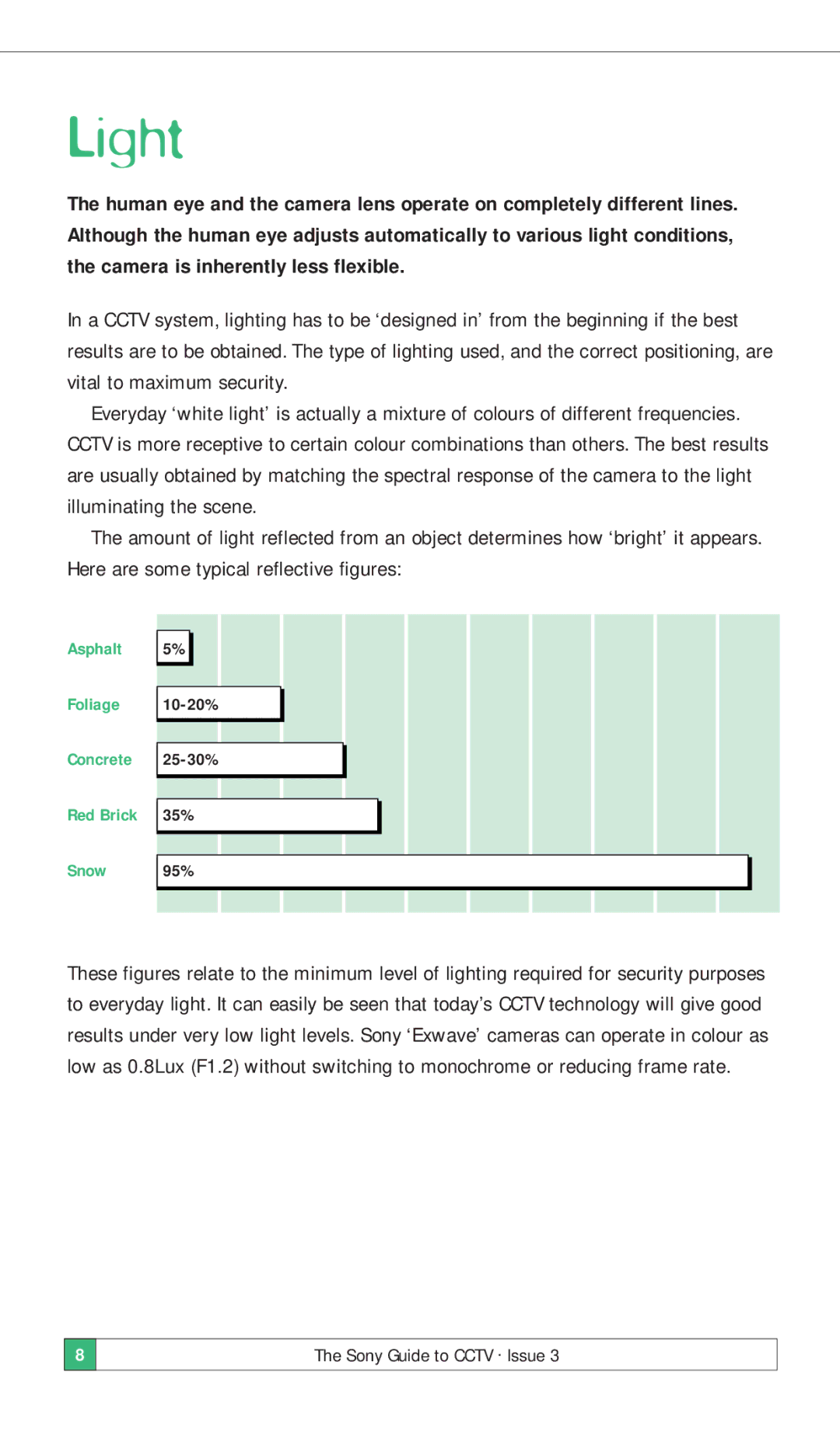
Light
The human eye and the camera lens operate on completely different lines. Although the human eye adjusts automatically to various light conditions, the camera is inherently less flexible.
In a CCTV system, lighting has to be ‘designed in’ from the beginning if the best results are to be obtained. The type of lighting used, and the correct positioning, are vital to maximum security.
Everyday ‘white light’ is actually a mixture of colours of different frequencies. CCTV is more receptive to certain colour combinations than others. The best results are usually obtained by matching the spectral response of the camera to the light illuminating the scene.
The amount of light reflected from an object determines how ‘bright’ it appears. Here are some typical reflective figures:
Asphalt
5% |
Foliage
Concrete
Red Brick
35%
Snow
95%
These figures relate to the minimum level of lighting required for security purposes to everyday light. It can easily be seen that today’s CCTV technology will give good results under very low light levels. Sony ‘Exwave’ cameras can operate in colour as low as 0.8Lux (F1.2) without switching to monochrome or reducing frame rate.
8
The Sony Guide to CCTV . Issue 3
